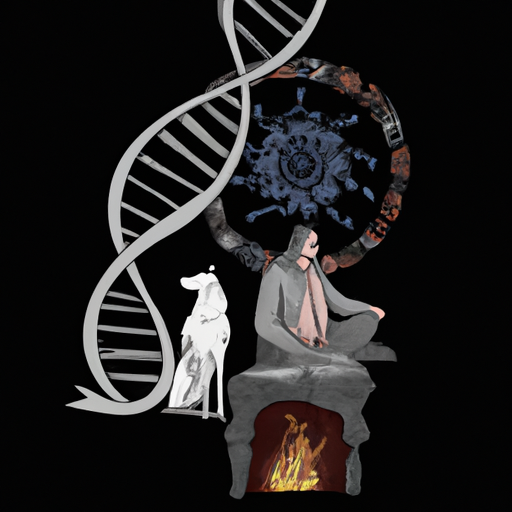The Dawn of Canine Companionship
As you gently stroke your dog’s fur, have you ever wondered when this bond between humans and canines began? The answer, my dear reader, lies thousands of years in the past. Scholars believe that dogs became domesticated between 20,000 to 40,000 years ago, making them our oldest companions in the animal kingdom. The story of their domestication is a fascinating blend of survival, companionship, and mutual benefit – a tale truly worth telling.
The How and Why of Canine Domestication
The process of domestication wasn’t a deliberate act but rather a beautiful accident. Imagine, if you will, a time when humans led a hunter-gatherer lifestyle, living in small, mobile groups. As they hunted and scavenged, they left behind waste and carcasses.
- Wild wolves, attracted by these remains, began to follow human groups.
- Over time, the wolves that were less fearful of humans had a better chance of survival.
- These ‘tamer’ wolves began to reproduce, leading to a new generation of wolves more accustomed to human presence.
This process, known as self-domestication, laid the foundation for the domestic dog breeds we know and love today.
Early Evidence of Domestication
Archaeological findings provide valuable insights into the early stages of dog domestication. The oldest known dog remains were found in Bonn-Oberkassel, Germany, dating back to 14,000 years ago. This prehistoric dog was buried alongside two humans, suggesting a bond of companionship.
| Excavation Site | Age (years ago) | Notable Findings |
|---|---|---|
| Bonn-Oberkassel, Germany | 14,000 | Dog buried with humans |
| Goyet Caves, Belgium | 31,700 | Canine tooth |
| Razboinichya Cave, Russia | 15,000 | Canine remains |
The Evolution of Breeds
Fast forward a few thousand years, and you see the emergence of distinct dog breeds. These breeds were developed to assist humans in various roles:
- Hunting dogs were bred for their keen sense of smell and agility.
- Herding dogs were valued for their intelligence and trainability.
- Guard dogs were chosen for their size and protective instincts.
This process of selective breeding has given us the myriad of dog breeds we see today, each with unique traits and characteristics.
The Role of Dogs Today
Today, dogs are more than just pets; they are family. They provide emotional support, assist people with disabilities, and even serve in search-and-rescue operations. The bond between humans and dogs is a testament to our shared history, a testament that began with a chance encounter between our ancestors and wild wolves.
Frequently Asked Questions
Q: When were dogs first domesticated?
A: Dogs were first domesticated between 20,000 to 40,000 years ago.
Q: How did dogs become domesticated?
A: Dogs became domesticated through a process known as self-domestication where wolves that were less afraid of humans had better survival rates.
Q: Where were the oldest dog remains found?
A: The oldest dog remains were found in Bonn-Oberkassel, Germany, dating back to 14,000 years ago.
Q: When did distinct dog breeds start appearing?
A: Distinct dog breeds started appearing a few thousand years ago, with breeds being developed for specific roles such as hunting, herding, and guarding.
Q: What roles do dogs play today?
A: Today, dogs serve as pets, emotional support animals, service animals for people with disabilities, and in search-and-rescue operations.



